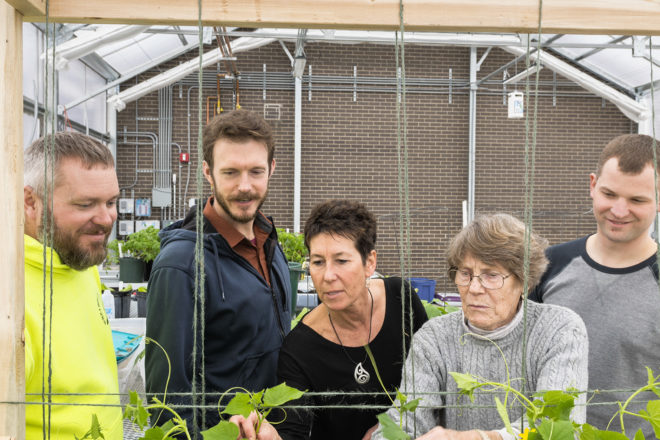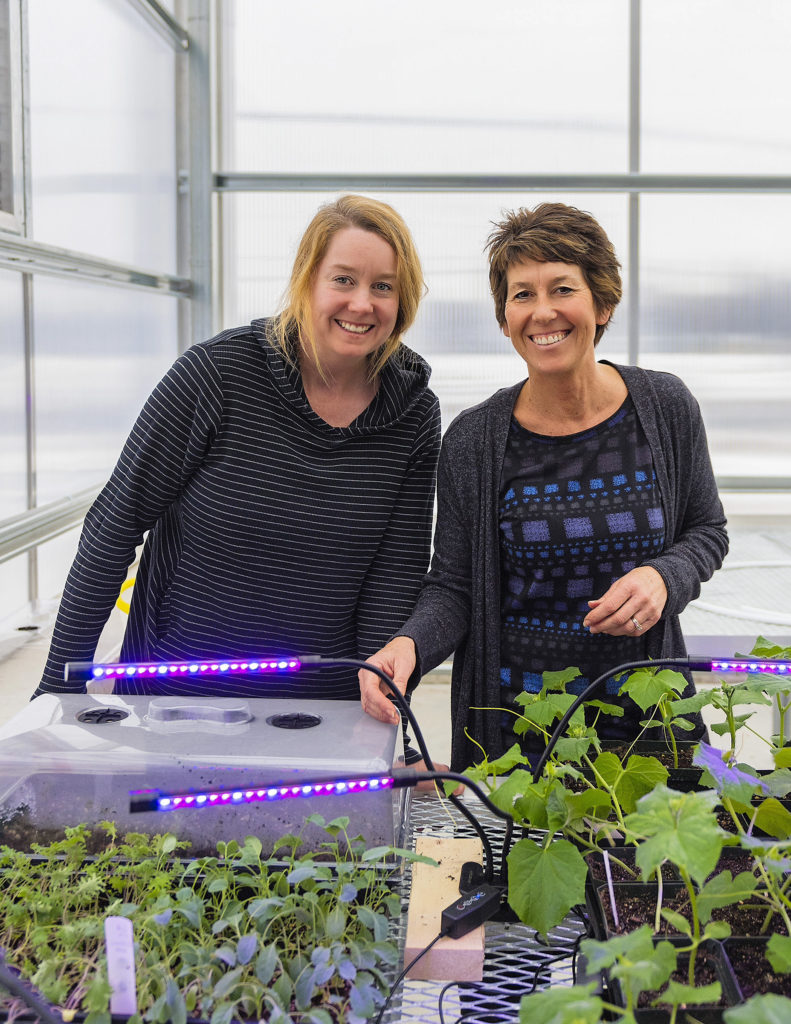With Greenhouse, Sturgeon Bay Students Dig Into Food Cycle
- Share
- Tweet
- Pin
- Share

A couple of generations ago, it wasn’t hard to teach Door County students where their food came from. After all, many of them worked on their family’s farm before they arrived at school each day.
But as the number of farms on the peninsula has dwindled, so has that connection to the land. Two years ago, Sturgeon Bay High School family and consumer-science teacher Natalie Townsend and foodservice director Jenny Spude started discussing an idea to renew that connection through a school greenhouse. The only problem? They didn’t know how to do it.
Then they talked to members of the Lutsey family, who, as the owners of Waseda Farms, raise organic beef and pigs and grow produce on their farm near Kangaroo Lake in Baileys Harbor.
“What they wanted to do was very much in line with our mission of education,” said Jeff Lutsey, one of three brothers who helps run the operation with their parents, Tom and Sharon Lutsey. “It’s important to us to educate kids on sustainable living, farming and knowing where their food comes from.”

The Lutseys put up $80,000 to get the ball rolling to raise funds for a school greenhouse, and that provided the spark needed to gain support from more than 30 other community members, businesses and foundations.
In December, the state-of-the-art greenhouse — featuring automatic curtains, vents and heaters that keep it a steady 79 degrees — was completed. Students in Townsend’s sustainable-living class use the greenhouse to get their hands dirty growing tomatoes, cucumbers, lettuce and other vegetables with the help of Door County Master Gardener Deb Javurek.
“You can talk to kids about this stuff, but getting your hands in the dirt and planting is a million times more valuable,” Jeff Lutsey said.

As the project grows, Spude plans to take produce directly from the greenhouse and put it into the school’s foodservice program — and possibly create a store where students can sell produce. Eventually the greenhouse will be integrated into photography, arts and technical-writing courses.
But for now the focus is on food.
“It’s easier to get kids to buy in to nutrition when they have a hand in growing the food,” Spude said. “And they don’t throw it out when they know everything that went into it.”
Each semester Jeff Lutsey visits the class to discuss sustainability, which Townsend said has been invaluable in getting kids to think differently about the food cycle.
“They start to appreciate where all food comes from,” Lutsey said. “It’s not just a beautiful package in a grocery store. There was labor involved; there was thinking involved; and then there’s the connection to ‘what is good food?’ Knowing that there are lots of different ways to grow food, and there are different ways that lead to a quality product. It makes you a more aware consumer.”


